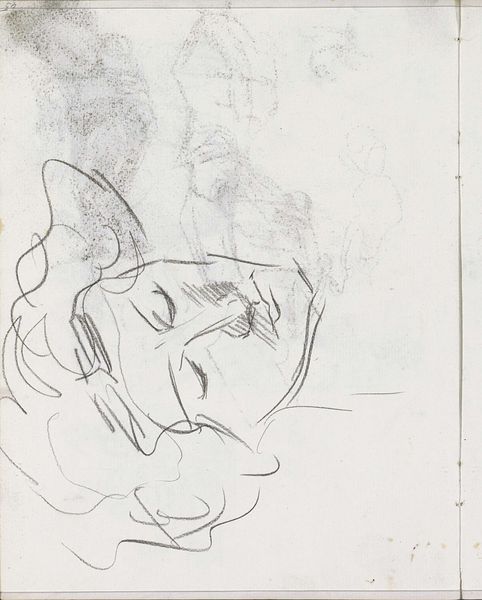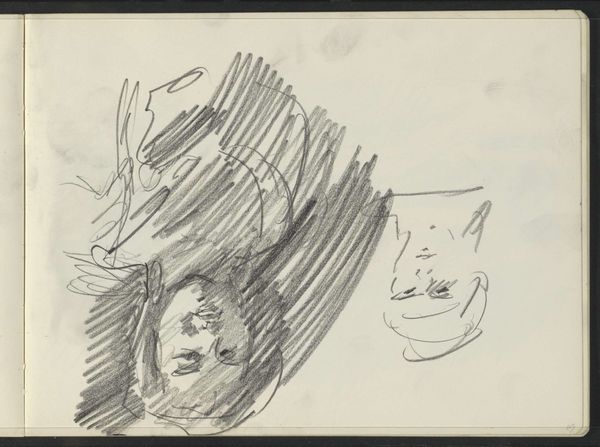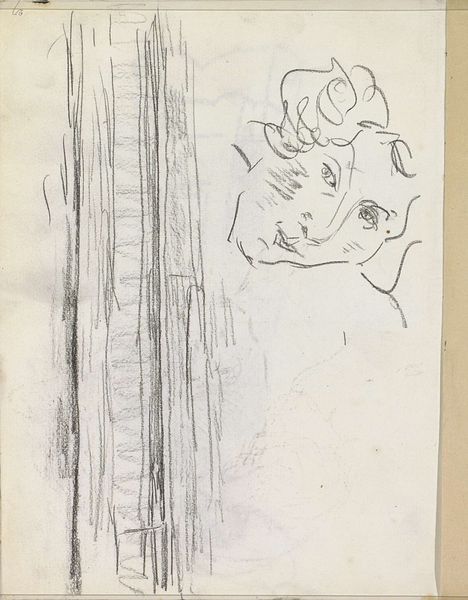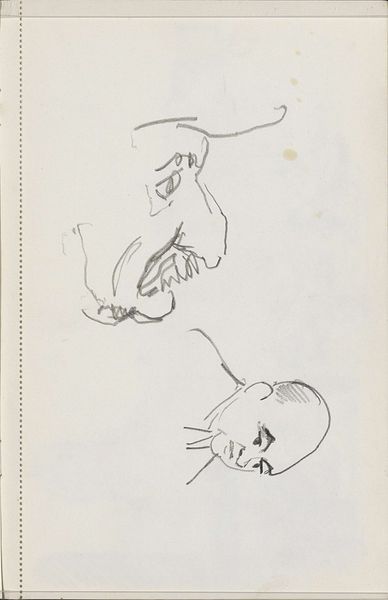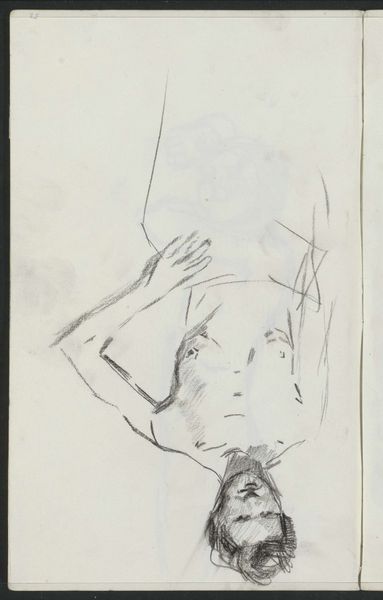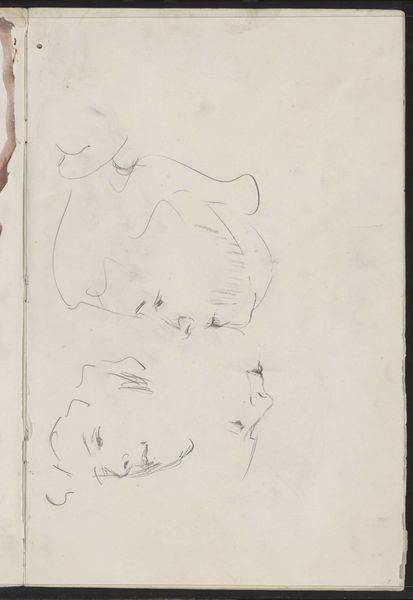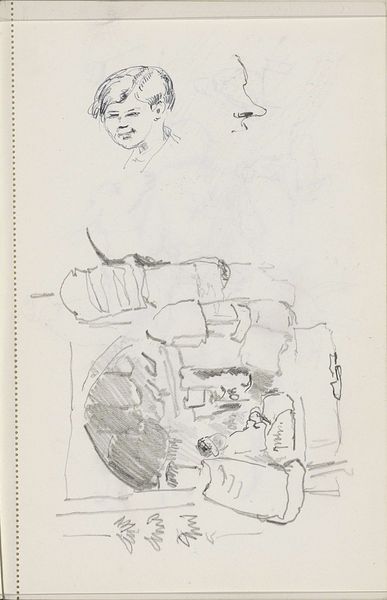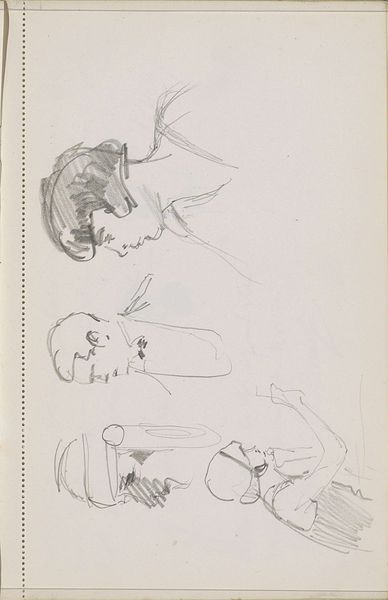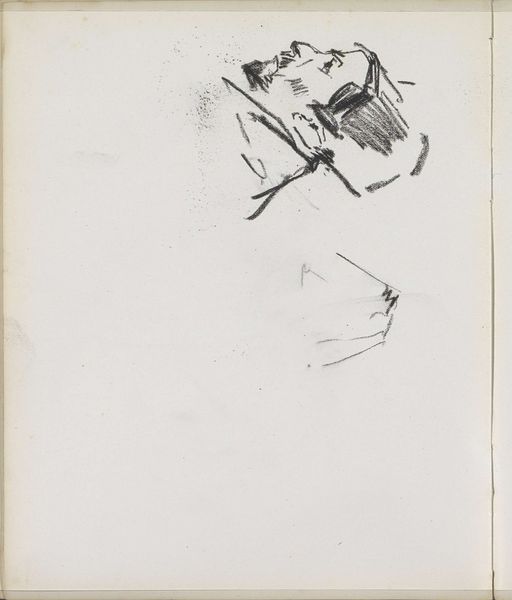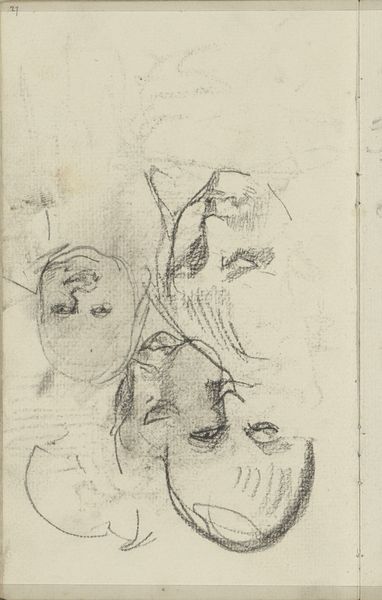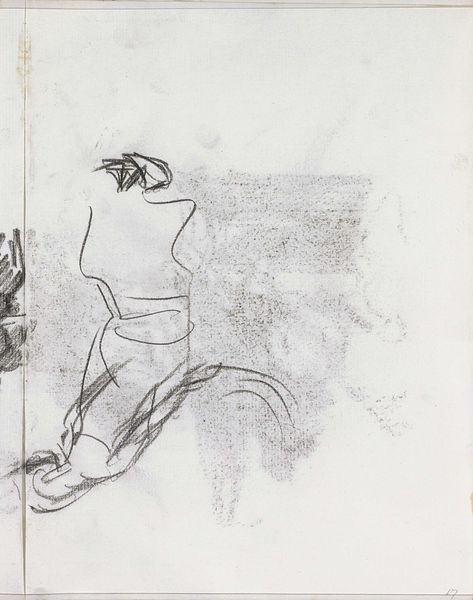
Copyright: Rijks Museum: Open Domain
Curator: This sketch possesses a peculiar intimacy. The tilted heads and hazy contours convey a dreamlike atmosphere, almost as if they are emerging from a mist. Editor: Indeed. Let’s orient ourselves. Here we have Isaac Israels's "Twee vrouwenhoofden," or "Two Women's Heads," dating roughly between 1875 and 1934. It’s a pencil drawing currently held at the Rijksmuseum. You know, seeing the faint lines and smudges, I feel like I'm intruding on the artist’s private thought process. Curator: Precisely. I’m particularly drawn to the lower figure. The shading around her eyes lends an almost melancholic quality, wouldn’t you say? I perceive elements of a suppressed emotional burden suggested by the heavy eye work contrasting the lighter line of the head, and in relationship with the other barely sketched faces it is enhanced. It carries significant resonance, reflecting Israels’ sensitive approach to capturing the essence of his subjects. Editor: I wonder if this wasn't preparation for a larger composition. Perhaps the artist was experimenting with poses or expressions. You see these figures repeated frequently throughout Israels' broader catalog and I wonder what that meant to him, or others consuming his work. The historical role of art and imagery is constantly evolving, especially with changing political landscapes and technological advancements in dissemination of images. Curator: It evokes the tradition of capturing memories, similar to creating a personal icon to be seen many times, recontextualized in changing political realities. Israels often created portrait work, so I think you are onto something about repeated figures through his other work. What does repetition of portraiture come to mean when it crosses over into political and social events of this era? What’s communicated or enforced? Editor: He created thousands upon thousands of these and his process can teach us a great deal. This sketch, though seemingly simple, encapsulates the complex dynamics of portraying individuals amidst socio-political evolution. Ultimately the history of the painting adds another lens. Thank you. Curator: Agreed. Indeed, tracing this sketch's symbolism through time would add a significant depth to our appreciation. It's a fascinating glimpse into the workings of an artist’s mind.
Comments
No comments
Be the first to comment and join the conversation on the ultimate creative platform.
